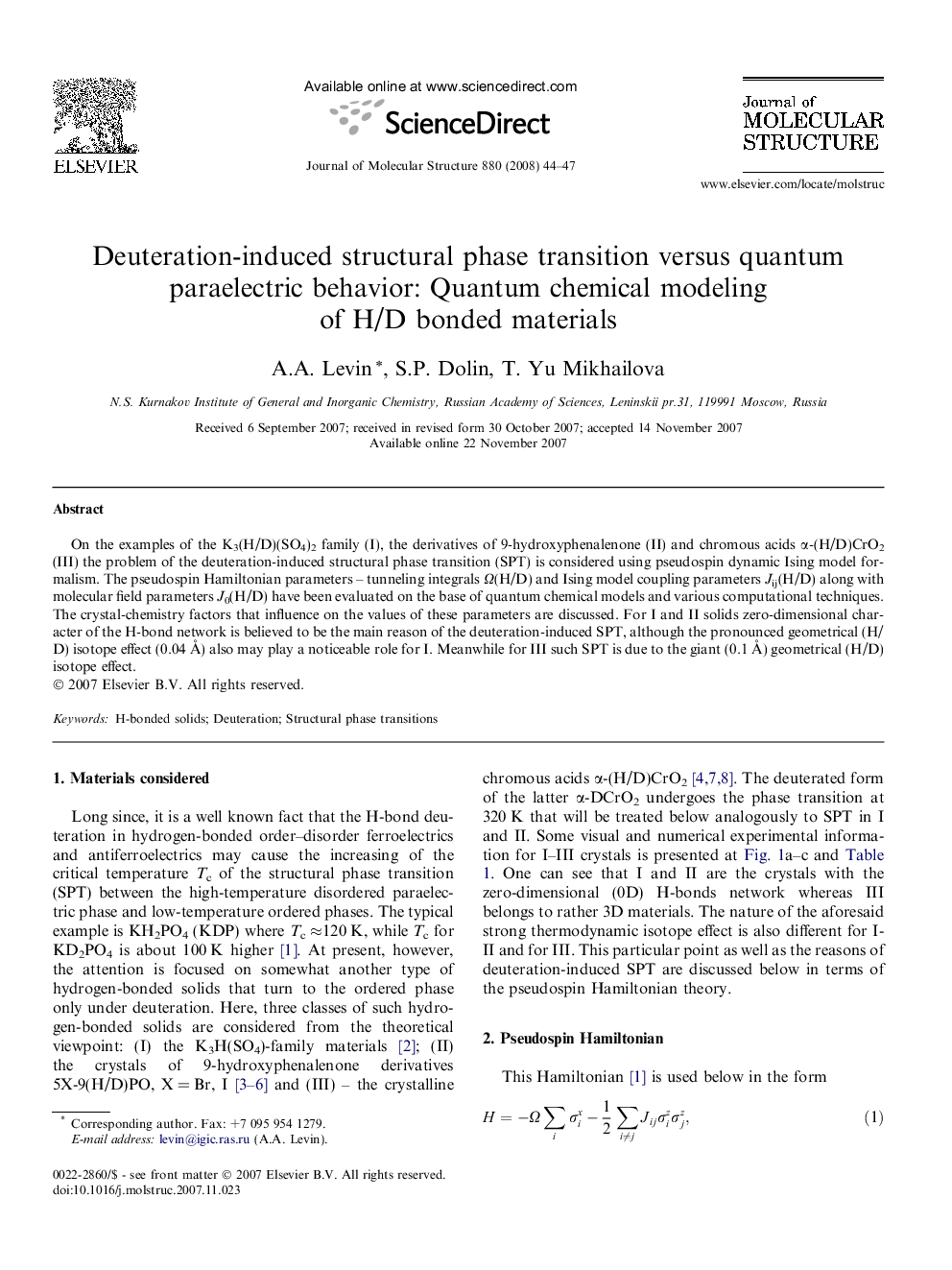| Article ID | Journal | Published Year | Pages | File Type |
|---|---|---|---|---|
| 1404198 | Journal of Molecular Structure | 2008 | 4 Pages |
On the examples of the K3(H/D)(SO4)2 family (I), the derivatives of 9-hydroxyphenalenone (II) and chromous acids α-(H/D)CrO2 (III) the problem of the deuteration-induced structural phase transition (SPT) is considered using pseudospin dynamic Ising model formalism. The pseudospin Hamiltonian parameters – tunneling integrals Ω(H/D) and Ising model coupling parameters Jij(H/D) along with molecular field parameters J0(H/D) have been evaluated on the base of quantum chemical models and various computational techniques. The crystal-chemistry factors that influence on the values of these parameters are discussed. For I and II solids zero-dimensional character of the H-bond network is believed to be the main reason of the deuteration-induced SPT, although the pronounced geometrical (H/D) isotope effect (0.04 Å) also may play a noticeable role for I. Meanwhile for III such SPT is due to the giant (0.1 Å) geometrical (H/D) isotope effect.
